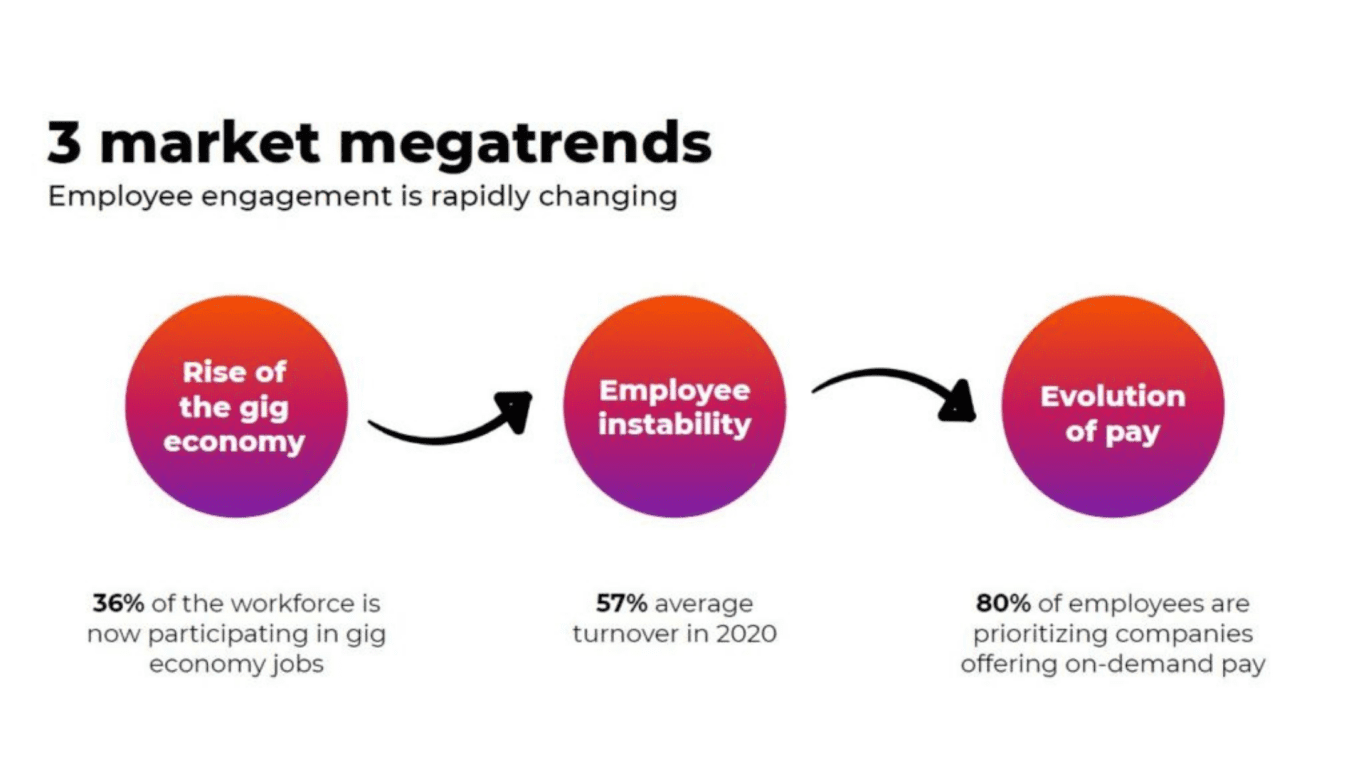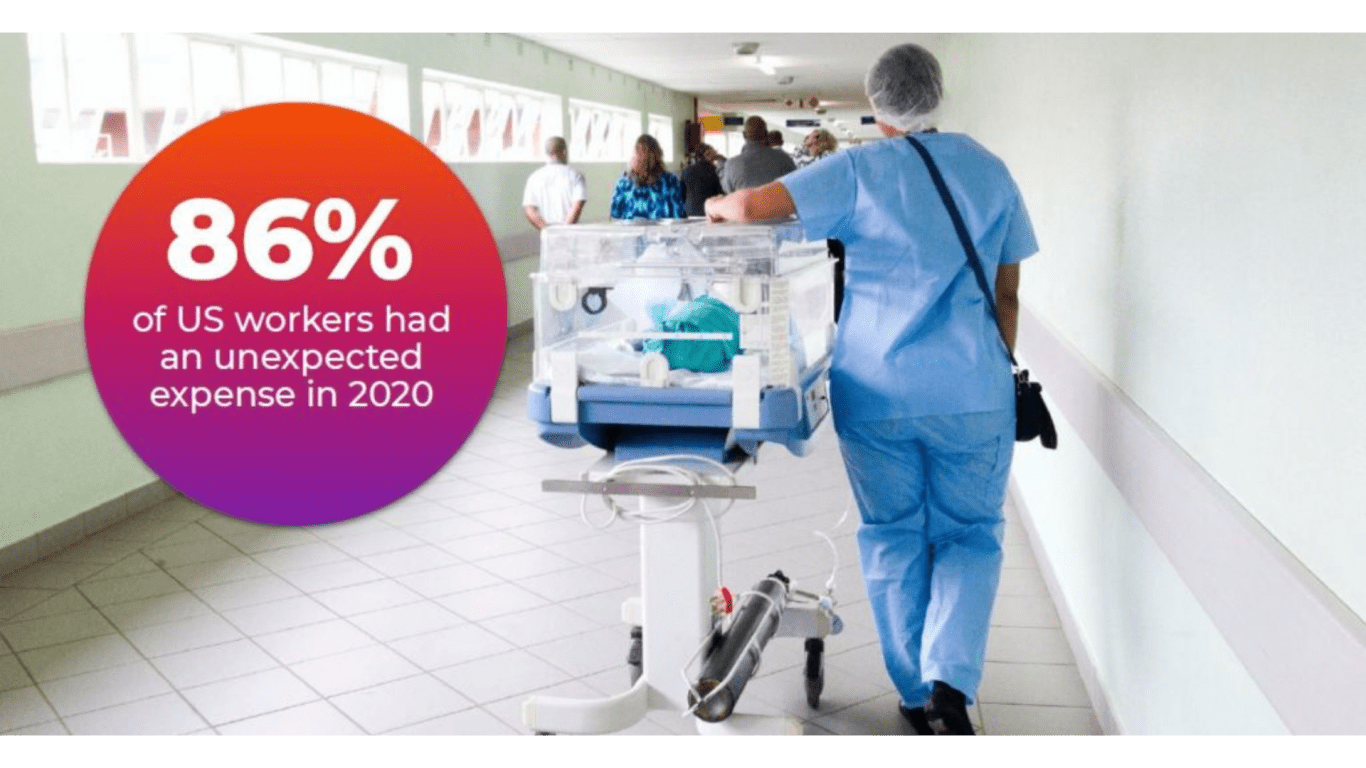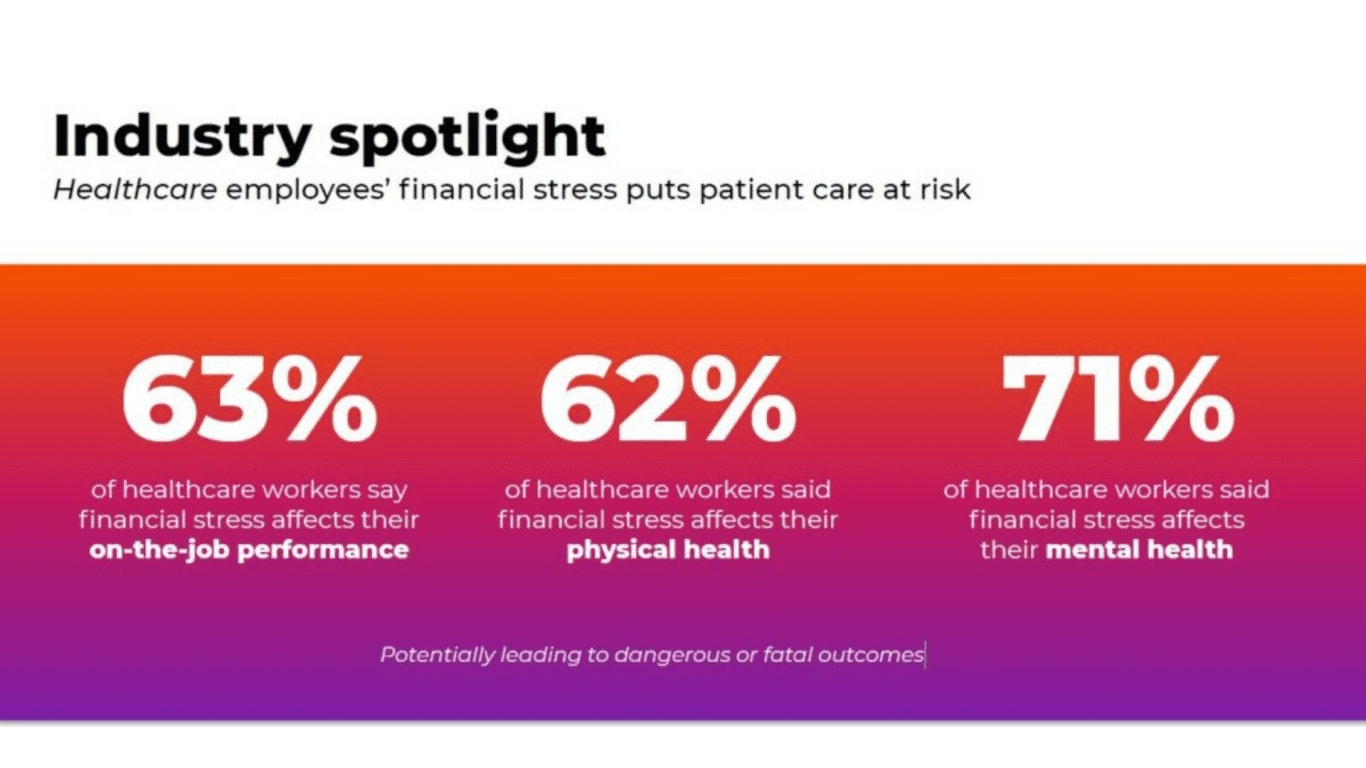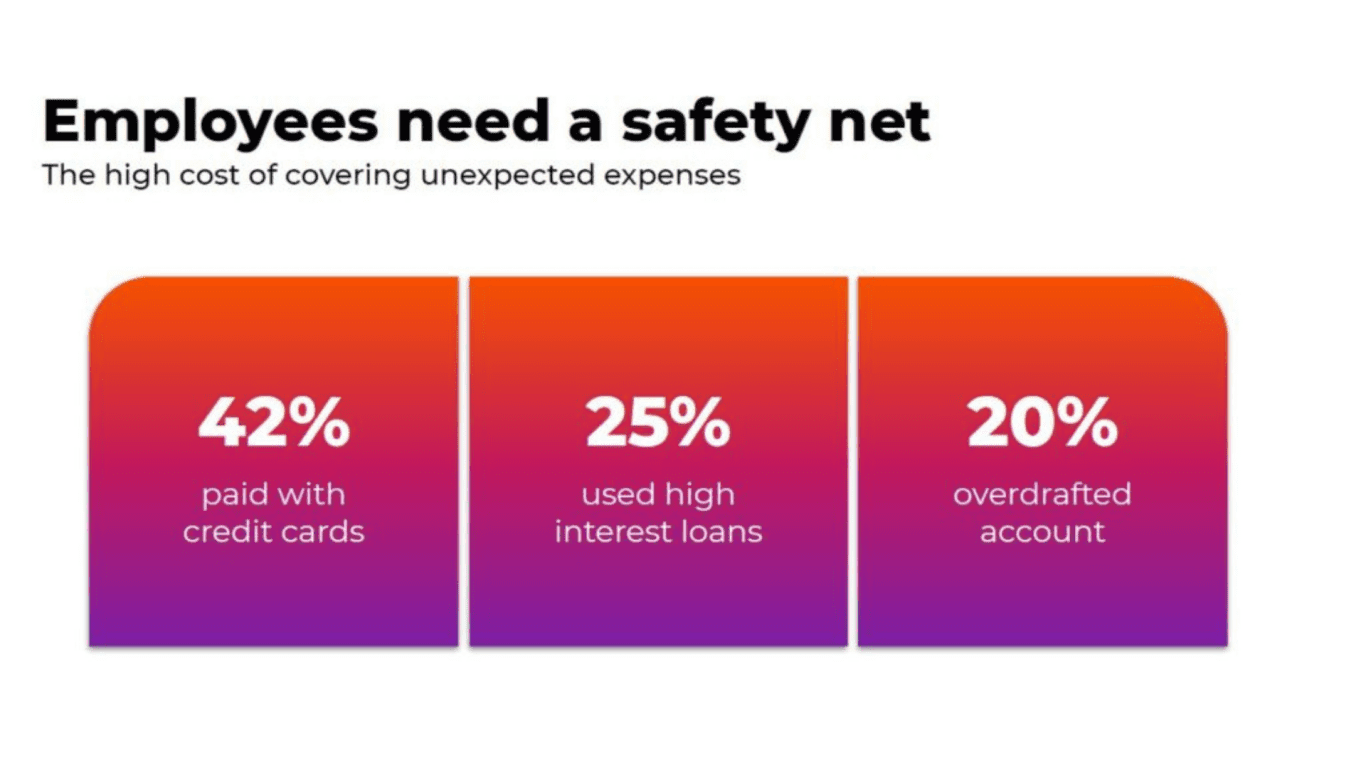Retain and succeed: Happier employees, healthier bottom lines
How can we engage employees in a rapidly changing job market?
As organizations plan for the future, they must cultivate a happier, healthier workforce.
Organizations can differentiate themselves in a hyper-competitive job market while improving job satisfaction and retention rates.
The average turnover rate for 2020 was 57%, and 36% of the workforce now participates in the gig economy.
We discuss HR leaders' current challenges, priorities, and potential solutions.
UNLEASH, along with our partners, Immediate, gathered a group of senior HR leaders to discuss these challenges and opportunities and explored how employee benefits packages that prioritize employee financial wellness can help increase employee retention, attraction, and productivity. Find out what was discussed!
3 megatrends shaping the job market

The rise of the gig economy has led to employee instability and increased turnover and this is leading to a need for the evolution of pay.
The requirement for pay solutions to change has come about through a realization and rising expectation from workers for the freedom to manage their own schedules and capabilities to get paid whenever they want. The solution isn’t necessarily that people should get paid every day, but there is a need to have the option to offer a financial safety net of being able to work around traditional monthly pay structures as an employer, for if and when something unexpected happens.
This need for financial safety nets has intensified in the last eighteen months, underlined in our recent discussion with senior HR leaders as they shared insights into the financial stresses that their own employees have faced. We also dug into how these financial stresses are proven to severely impact job performance and physical and mental wellbeing, as well as retention levels.

Healthcare Industry Spotlight:
Our roundtable conversation honed in on the healthcare industry given that over the past 12 months, hospitals and health systems have experienced record-high turnover rates, as well as unprecedented challenges related to employee stress and burnout. This negatively impacts healthcare organizations’ bottom lines and patient outcomes.
Immediate’s survey of 1,250 employees that took place in November 2020, assessed their financial health status and challenges. They also undertook one of 200 employers to understand how they view and support employee financial health. These are some of the results:


Topline Priorities from our discussion:
We asked the participants of the roundtable discussion what their priorities are currently and for the near future. These were the resounding heavyweight outcomes:
- Addressing employee instability, bettering attraction and retention figures
- DE&I prioritization across the organization
- Creating a culture of purpose and recognition
Bettering attraction and retention figures
The precarious job economy of today – a time that is being heralded as the “Great Resignation” – can largely be assigned to workers taking the decision to leave based on how their employers treated them – or didn’t treat them – during the pandemic.
Our conversation brought up experiences of challenges relating to these issues of employee instability and the desire from employers to not just attract talent but retain too. We heard the efforts that our HR leaders had made to support their staff during the last eighteen months, and how they have grappled with the issues of burnout and high-stress environments; cultural remote worker and office worker splits; and intensified focus on performance and workloads.
With some employees having to work from home, and others having to come in, it really seperated our culture. Whilst offering free lunches to those coming to the office, we also had to explain that working at home might mean colleagues were saving on gas, but then spending more on electricity.
Senior HR Leader
Employers haven’t just had to step up in the way of financial burdens either. Our HR leaders shared experiences of different needs for different employees, some financially orientated of course, but others more around burnout and stress.
Given the blurring of boundaries between work and home, it’s unquestionable that the emotional impact and demands on employees have created a shift in the employee-employer relationship.
Like many companies, we’ve used our employee assistance program quite a bit. And not just for financial things, a lot was to do with mental health as well.
Senior HR Leader
This is where financial wellness solutions can really set employers apart from their competitors. They can be a powerful signpost to employees that an organization cares about the lives of their employees, outside of the office and outside of their work-life. This can lead to more engaged and loyal employees and thus, better retention.
It’s also an opportunity for pay solutions to bridge the gap between mental wellbeing and productivity – alleviating financial burdens and the number one cause of stress. And the proof is in the statistics, with Earned Wage Access (EWA) proving it has increased appeal to new talent and that it betters retention levels of existing personnel.
DE&I prioritization across the organization
Of course, one of the biggest challenges in the limelight of the last 18 months for HR leaders and societies in general, has been around DE&I.
How can organizations attract diverse talent, support diverse talent and retain diverse talent? Again, the intersection between work and home-life has really driven a lot of the laser focus on the subject and shone a light on the stark realities of failings around DE&I.
Workers didn’t feel like they were included and belonged in our culture anymore because of the remote way of working.
Hearing from our HR leaders during our discussion, they shared stories of colleagues who have witnessed first-hand the childcare and eldercare demands and peripheral strains that they themselves or colleagues are supporting that are a financial and mental weight.
Workers have had to be more open about their personal situations, due to them being laid bare whilst on video calls or perhaps their inability to take after-hours meetings. And some costs of the pandemic to individuals and their families, like the need to downsize or move in with family or even move to other parts of the country, haven’t been allowed to be hidden by the traditional work-life differentiator as the two have blurred more than ever.
Understanding the pay inequities in our organizations has clearly been a priority for the HR leaders we spoke to. Witnessing and addressing the shortfalls in at-home work infrastructures and bridging those gaps, as well as considering the financial burdens that weigh unequally on the workforce demographics is the first step to being able to address these issues to then better attraction and retention of employees.
On-demand pay solutions can be a gateway for employees to improve their socioeconomic status and build better their financial health – ultimately, it could be the pathway to closing wealth gaps and improving the livelihood of workers, creating a more diverse and equal workforce (and society).
Creating a culture of purpose and recognition
Creating a sense of belonging and psychological safety has clearly been a top priority for HR leaders during this really challenging time. Some of our HR leaders noted during our discussion that they have been trying to achieve this through creating a culture of purpose and using recognition as a tool for retention.
Because our nursing population still had to be on site, we needed to look at ways to show we cared. Was it through providing childcare; was it through vacation – where can we provide flexibility and an environment that supports them beyond just the tangibles, and expands on the wellness aspect.
Proving to employees that they are valued and cared for cannot go amiss in its efforts to keep employees on board. It’s not enough in today’s context for employees to just be happy that they have a job.
Creating meaningful moments for an individual, to prove that it’s a two-way relationship between the employee and employer is critical to be attractive as an organization.
One HR leader noted their experience of understanding the need for driving a cultural shift to create a sense of purpose and belonging. “We have this value proposition issue around why should you continue to work here? And how are we valuing you? The financial aspect of things is manifesting, and COVID has certainly magnified that. We’re not addressing this idea around retention like we should be, because most of the time, we think when we get the person into this company, they should be happy, they have a job, and then we forget about them. Meanwhile, we’re trying to find ways to attract people by overpaying them for entry-level jobs.”
EWA and financial wellness solutions can be an enviable powerhouse to prove to employees that they are valued and recognized. Providing pay to employees as they work, will alleviate their financial burden, but also weigh positively to their consistent feeling of being valued, positive and purposeful. Looking after your staff is a cornerstone to building trust with not just your employees, but your customers too.
Not only is it paramount for the wellbeing and performance levels of employees, that organizations consider compensation and benefits tools available to provide them with financial safety nets, but also as a tool to attract, retain and differentiate from the competition.
Sign up to the UNLEASH Newsletter
Get the Editor’s picks of the week delivered straight to your inbox!

Head of UNLEASH Labs
Abigail is dedicated to connecting HR buyers with the technology and tools they need to succeed.